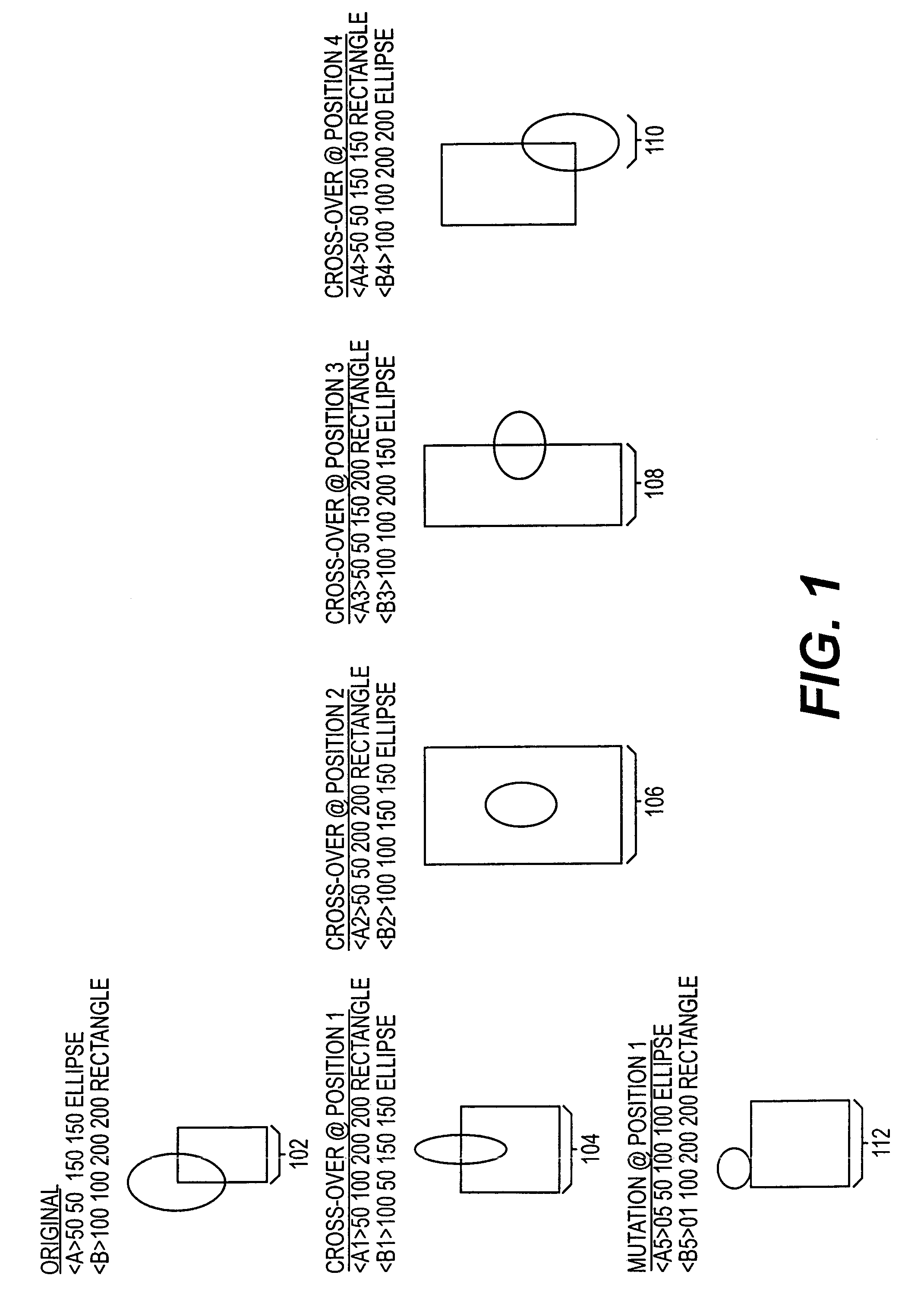Although many computer systems / languages are increasingly compared to
DNA and
genetics, they do not include many desirable attributes of biological “computation” systems and therefore are deficient for implementing robust, evolvable, life-like computer programs.
Instructions must have proper
syntax and execution context.Instructions cannot be arbitrarily recombined to form new programs.Superfluous, “junk”, instructions are not allowed within programs.Translation of instructions is deterministic (i.e. it is not influenced by the environmental conditions at runtime nor is it probabilistic.)
Although algorithms and
programming methods have been specifically developed to emulate the evolutionary process (e.g. “Genetic Algorithms”, “
Genetic Programming”), these also fail to provide the facilities of natural systems, are often cumbersome to deploy, and are not inherently designed to facilitate evolution.
The deficiencies of
Genetic Programming as a
general purpose platform for evolving solutions to problems and for providing a computational platform with the facilities of
molecular biology include:Programs must be syntactically correct to be bred or evaluated.Standard features of computer languages, such as looping,
conditional logic blocks, and subroutines, cannot be implemented in the customary fashion.Automatically created programs cannot themselves create, inspect, test, and terminate other automatic programs.The behavior (number of inputs and outputs) of a program must be known in advance of breeding and evaluation.Programs can't be marked to identify sites for
mutation or other genetic operations.The genetic lineage of programs can't be determined by examining the programs themselves.Instructions are not interchangeable or redirectable.Implementations do not provide for multi-tasking, e.g. the simultaneous evaluation of two or more evolvable programs.The environment and
instruction set cannot be altered while programs are running.
A fundamental problem in using
genetic programming to evolve solutions to problems is that programs cannot be arbitrarily recombined without producing
software with invalid
syntax, nonsense logic, overflow errors, etc.
Termination is an unrecoverable error that stops the entire computing process in the middle of execution and typically requires
human interaction in order to resume.
Traditional computing environments are therefore unsuitable for automatically evolving solutions to problems or designing a robust life-like computing
system.
As noted above, existing virtual and
silicon machines (computers) are not designed to process random code, and will halt execution on unhandled errors.
This restriction may hinder the achievement of an optimal solution as all paths must be syntactically correct, thereby prohibiting “short cuts” or “trespasses” through the space of “illegal programs.”
In addition to syntactical errors, the arbitrary recombination of programs frequently produces programs containing circular logic and infinite loops that cannot be readily terminated by existing
genetic programming systems without human intervention.
Existing computer architectures do no allow for the inclusion of junk instructions which have the potential of later being executed (silent instructions).
Although the role of introns is not fully understood, no
software system presently allows for their inclusion.
However, this real-time
extensibility is not a feature of existing software languages.
Although it may be possible to detach and update object libraries that a program uses through
operating system commands, existing computer languages do not provide functions to programmatically edit and update the elements of the libraries, i.e. prior art languages do not provide features for programs written in such languages to modify themselves at run-time.
The above-noted shortcoming limits the speed that programs can be evolved, as the process must continually be terminated and then restarted at each generation.
It also does not enable online
adaptation or cooperative computing in which one
personal computer is in production while another one is evolving improvements to the
library.
For example, prior art computer systems are highly deterministic.
Were such deactivation of portions of code allowed to occur in current software environments, the program may become syntactically incorrect, thus generating an error.
Another deficiency of the prior art is the lack of ability to dynamically switch between treating information as
executable code and treating it as data.
Programming languages such as LISP have a limited ability to switch between data and
executable code mode in that it can manipulate text-based items rather than
processing them.
However, LISP does not assign numerical designations to all of its instructions.
Thus, it does not manipulate the items on a numerical level, and would be deficient in implementing the concepts mentioned above.
The inability to individualize each instruction in current environments thus limits the possibility to analyze, study, research, modify, and price programs.
From the above, it can be appreciated that “prior art” computers (virtual and
silicon) and software languages are deficient in emulating many of the characteristics that make up the evolutionary process and do not allow the deliberate or arbitrary recombination of software instructions.
Existing computers terminate execution on unhandled errors and are therefore not fault tolerant.
Code cannot be arbitrarily reassociated.
Unused code (analogous to introns) cannot reside embedded in software programs as the code itself lacks the facility to determine which sections to execute or ignore.
Software languages cannot be compiled or interpreted if syntax errors exist.
Extant languages do not permit real-time
extensibility, the ability to add new functionality without stopping execution of the program and recompiling.
Existing
machine instructions which make up software languages and are processed by the computer are uni-dimensional and do not provide for individualization (e.g., tagging).
 Login to View More
Login to View More  Login to View More
Login to View More 


